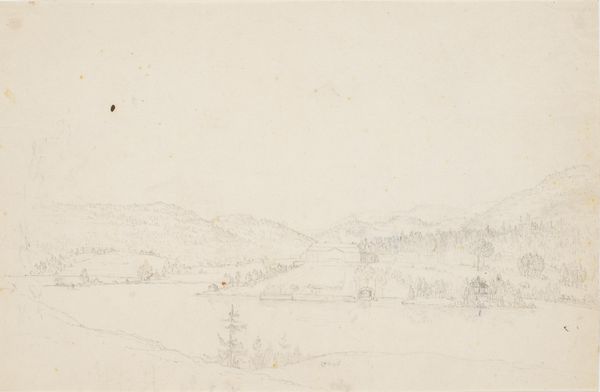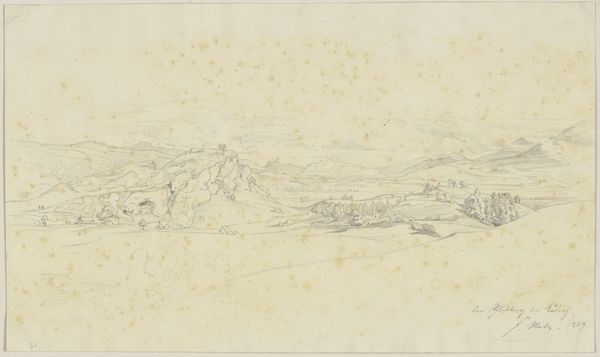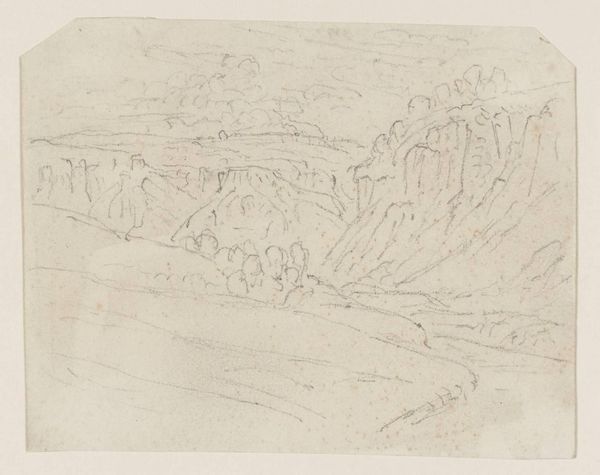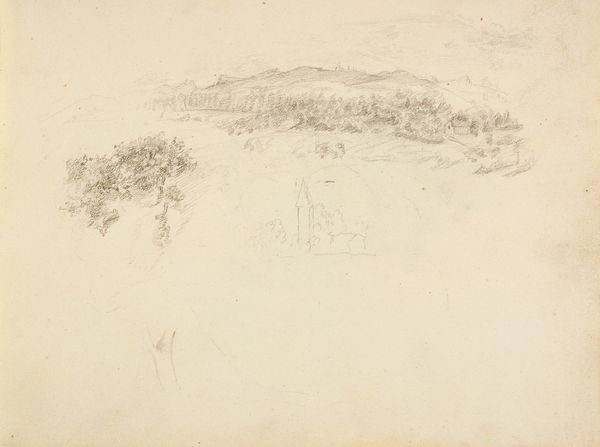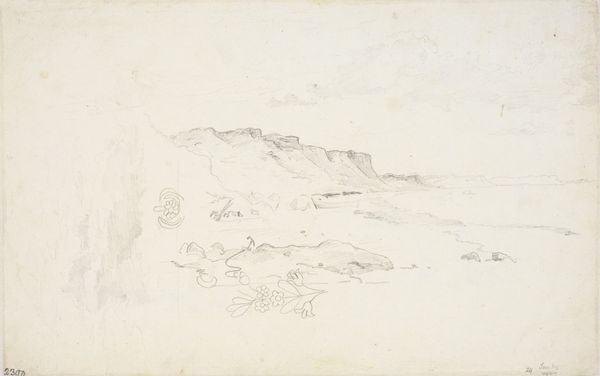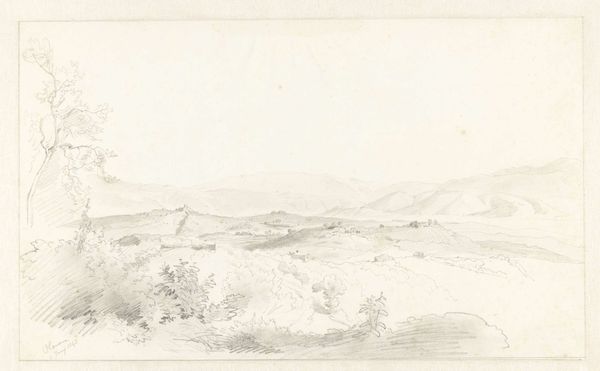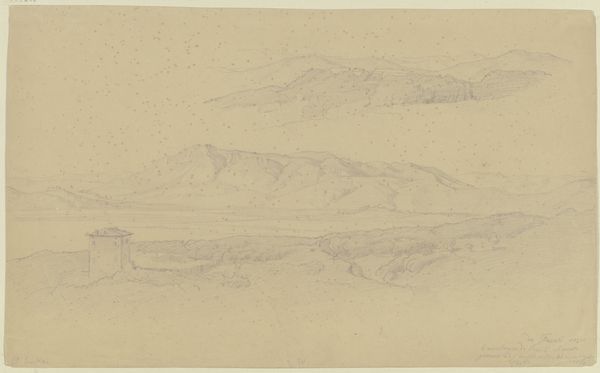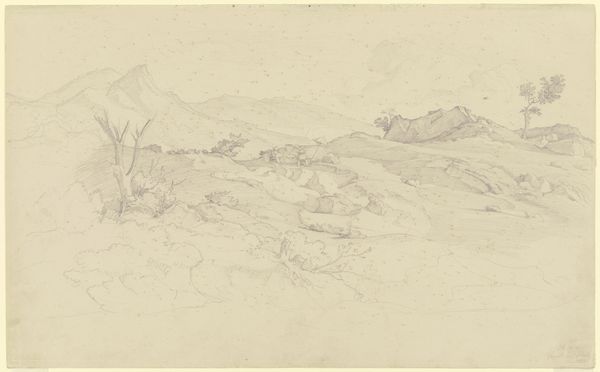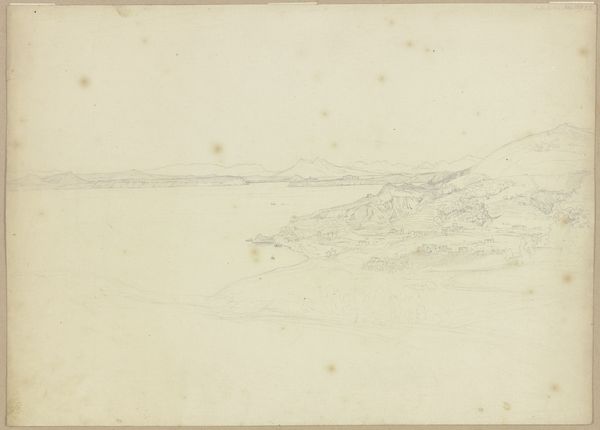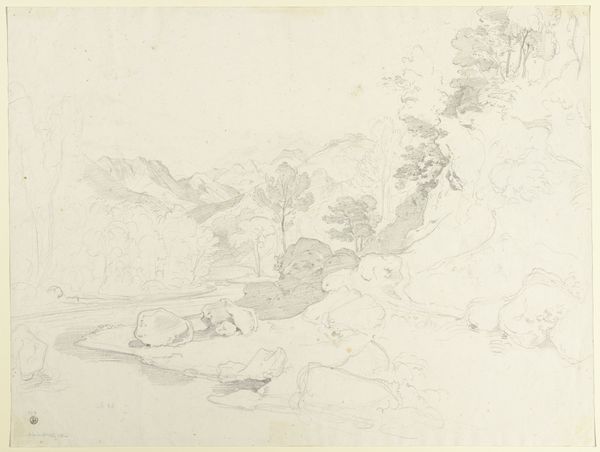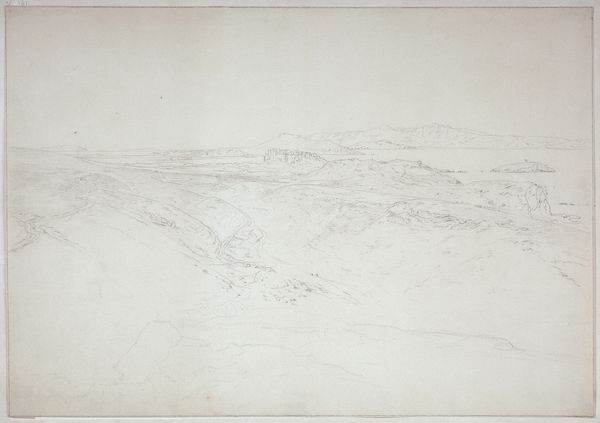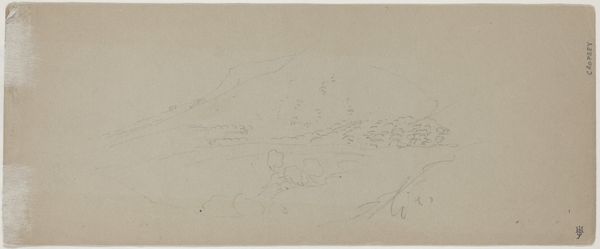
drawing, pencil
#
drawing
#
landscape
#
romanticism
#
pencil
#
line
#
realism
Dimensions: 343 mm (height) x 466 mm (width) (bladmaal)
Curator: Before us is "Parti fra Sabinerbjergene," or "View of the Sabine Mountains," a pencil drawing created between 1798 and 1854 by Ditlev Blunck, residing here at the SMK. Editor: It feels almost ghostly, doesn't it? So pale and delicate, like a faded memory of a landscape rather than a solid depiction. The faintness evokes a sense of vulnerability, perhaps alluding to human impact on the natural world. Curator: Precisely. Blunck’s work here prioritizes line and form. Notice the meticulous strokes forming the distant mountains, conveying depth through subtle variations in tone and the skillful arrangement of perspectival lines. There’s a considered reduction of detail here, focusing our attention on the structure. Editor: I'm drawn to think about the historical context. The Sabine mountains, steeped in classical mythology... Blunck was working during a time of considerable social and political upheaval across Europe, wasn't he? One wonders if this serene landscape, so consciously crafted, isn't a reflection of that. A refuge perhaps? Curator: It’s tempting to overlay interpretations, but let’s not overlook the formal strategies. Look how the composition hinges on the strong diagonal, creating a division between the foreground and the hazy mountains in the distance. Editor: But art is always entangled with its moment, wouldn’t you agree? Perhaps this drawing gestures toward the search for a more simplified life, away from increasing industrialization? Curator: Regardless of motivation, it reveals Blunck’s sophisticated understanding of artistic tradition. It has an aesthetic value, even beyond its representational accuracy. Editor: Certainly. I agree. Still, I am left with the thought about how this sketch reflects on power dynamics inherent in our relationship with the Earth. A fleeting, almost ephemeral moment that begs reflection on themes of loss and the quest for stability during times of change. Curator: A very generous analysis indeed, leaving much for our viewers to contemplate. Editor: Exactly. Art's inherent power lies in these opportunities for thought.
Comments
No comments
Be the first to comment and join the conversation on the ultimate creative platform.
